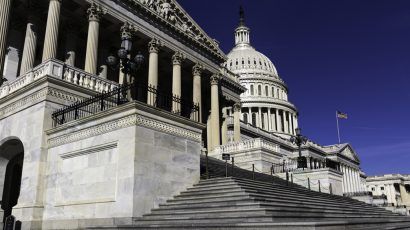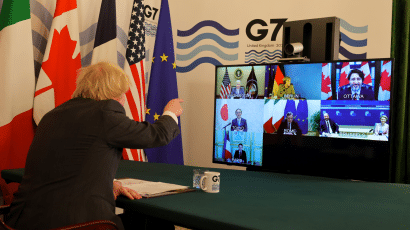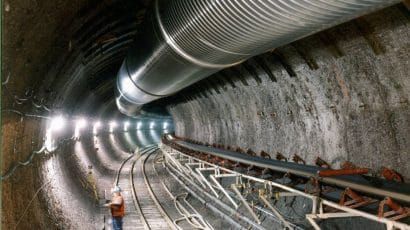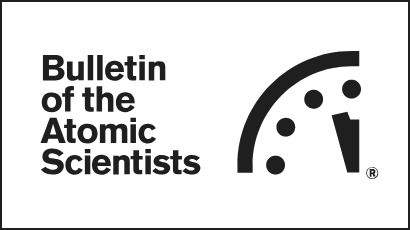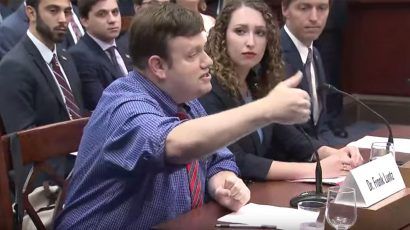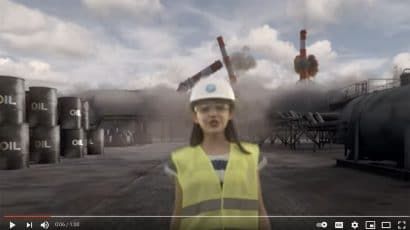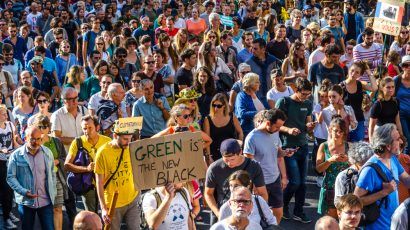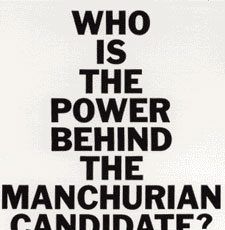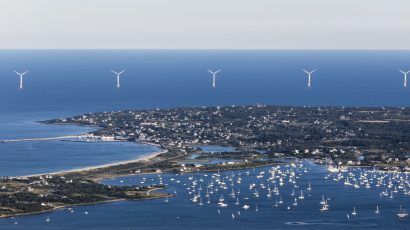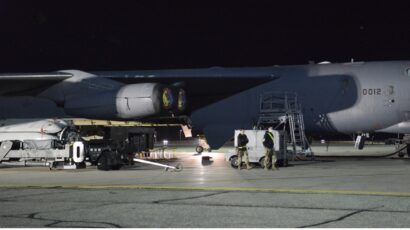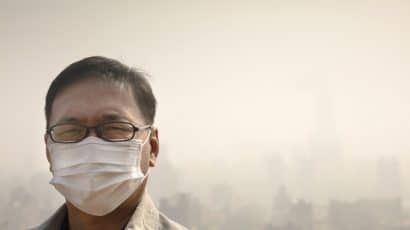Search results for Koch
Just like the argument about whether the Earth is round or flat, the science of climate change is settled, with 97 percent of researchers agreeing that our climate crisis is largely manmade. So why do so many members of the American public think the expert consensus is much lower? Here's a look at how those percentages were calculated, from someone who helped make them. And a look at the origins of the widely disseminated misperceptions about those numbers.
How to trash confidence in a COVID-19 vaccine: Brexit edition
Brexit politics, tabloids, corporate dissembling—and French President Emmanuel Macron—almost tanked confidence in a COVID-19 vaccine.
Europe is going all-out on hydrogen energy. Why not the US?
Once upon a time, hydrogen was supposed to be the future of energy. It may be the future, once again.
Opportunities for US-Russian collaboration on the safe disposal of nuclear waste
A group of young Russian and American nuclear professionals surveys the key differences between the Russian and US nuclear waste disposal strategies, identifying specific areas in which collaboration and data sharing could help to resolve important scientific and technical uncertainties.
Too late to counter missile proliferation?
Missiles are a critical component of a country’s nuclear weapons arsenal, which is one reason why concern over missile proliferation is widespread among policy experts. Yet, there is no consensus on how to respond to the WMD missile challenge.
Top Republican message-maker Frank Luntz calls for climate action
GOP message master Frank Luntz—the man who turned global warming into "climate change"—is now offering his messaging services to the cause of climate action. “I’m here before you to say that I was wrong in 2001,” Luntz told a Senate committee. “Just stop using something that I wrote 18 years ago, because it’s not accurate today.”
Corporate greenwash stains Earth Day
A lot of questionable things can get slipped in under the cover of Earth Day. Take a look at just one example in his home state of Florida, writes atmospheric scientist John Morales.
We need a better Green New Deal — An economist’s take
Investing in a green economy will create about three times more jobs than maintaining our existing fossil fuel infrastructure. So what’s the problem with selling the existing Green New Deal to the country? Plenty, says an economist who has studied a number of different green energy plans.
Trumping The Manchurian Candidate. Again.
Political pundits have been making many references lately to The Manchurian Candidate, but few seem to know the origins of the phrase.
Tilting toward windmills
TILTING TOWARD WINDMILLS A homespun Rhode Island destination gets an offshore wind farm—and, mostly, likes it. Will massive offshore wind parks follow, powering America’s Northeast? A Bulletin special report by Dan Drollette Jr. The Block Island wind farm. BOEM video excerpt A Bulletin special report by Dan Drollette Jr. To learn more about the latest … Continued
Nuclear Notebook: How many nuclear weapons does the United States have in 2022?
This Nuclear Notebook examines the status of the US nuclear arsenal, which remained roughly unchanged in the last year, with the Defense Department maintaining an estimated stockpile of approximately 3,708 warheads. Of these, only about 1,744 warheads are deployed, while approximately 1,964 are held in reserve. Additionally, approximately 1,720 retired warheads are awaiting dismantlement, giving a total inventory of approximately 5,428 nuclear warheads. Of the approximately 1,744 warheads that are deployed, 400 are on landbased intercontinental ballistic missiles, roughly 944 are on submarine-launched ballistic missiles, 300 are at bomber bases in the United States, and 100 tactical bombs are at European bases.
Why isn’t health care a US right?
The US Supreme Court will likely decide on the constitutionality of President Barack Obama's health care law, the Patient Protection and Affordable Care Act -- which requires American citizens to either buy health insurance or incur a penalty -- sometime this session. The 11th Circuit Court of Appeals in Atlanta ruled against the law, while other appeals courts, including one in Cincinnati, have either rejected the case or upheld the law.
Virus aftermath: Optimism or pessimism about its effect on climate change?
Some observers express optimism that victory over the coronavirus will instill greater appreciation for what science, government, and business can do together to tackle climate change. Others fear that the virus’s economic damage will set back climate efforts by years.
What demographic group cares the most about climate change? Latinos, Yale researchers say.
“Climate is not an issue that only white, upper middle-class, latte-sipping liberals care about” say researchers.
切尔诺贝利死亡事故与专家判断之挑战
核紧急情况的准备和响应工作在很大程度上是技术和体力活,会用到水泵、发电机、安全壳和直升机等设备。但是这种工作不仅仅是技术活。如我的圆桌讨论同事Manpreet Sethi所述,准备和响应工作也涉及复杂的法律文书和组织能力。此外一些读者评论表示,准备和响应工作还涉及复杂的监管和培训能力。然而,无论一国签署了多少份国际公约,无论该国对出乎设计预料的事故的处理方式如何灵活(或不灵活),在真正发生紧急事故时,关键决定最终还是得由核电站的员工来做,并将取决于员工对事故严重程度的判断。随着灾情的演变,这种判断也会随之演变。专家们会改变他们对灾难严重性和潜在后果的意见。他们会发现,之前看似毫无联系的系统实际上是互相关联着的。 这种现象会阻碍Sethi在第一轮讨论文章中所提及的紧急情况下的有效沟通。Sethi在论述切尔诺贝利和福岛事故中出现的准确信息传达的延误情况时,写道:“(当出现紧急情况时,)政府官员必须能够快速得到全面的科学意见和专家判断,以便其在极端紧迫的情形下做出好的决定。” Sethi认为,官员们必须能够迅速准确地对一起事故的严重性进行分类。但问题是,无论对于官员还是专家而言,当发生严重事故时,要又快又准地判断情况究竟有多糟糕通常非常困难。当一起灾难还在发生时,不可能对其进行精确分类;换言之,随着一起灾难的不断演变,应该对其不同发展阶段的严重程度分别进行分类。 那么,真正的挑战应该在于如何传达不完整或者没有被完全理解的信息,并基于此信息做出相应决定。尽管Sethi提出的“全面的科学意见和专家判断”在紧急事故发生时会起到至关重要的作用,但这些意见和判断也不是绝对无误的。 合理的后果。在核灾难所带来的健康危害这一话题上,专家判断既起到关键作用,又引来许多争议。Augustin Simo在第一轮文章中提到目前切尔诺贝利事故的死亡总人数大约为56人。Sethi给出了类似的数据(虽然她承认死亡总数可能在未来长期内还将有所上升)。两位作者都将这些数据作为核行业足够安全的证据,言下之意就是,核事故造成的死亡人数相比普通事故造成的死亡人数要少得多。例如,美国每天大约有90人死于汽车、卡车和摩托车撞车事故。当审视诸如核能等的高风险技术时,总是容易让人想做这种比较。然而,这种比较存在着两个问题。 首先,核灾难造成的人员死亡通常是一个极具争议的话题。2005年,世卫组织与其他机构在一份关于切尔诺贝利事故造成的人员死亡的报告中预测,“最终可能会有4000人死于核辐射。”然而绿色和平组织2006年的一份报告挑战了这些数据,该报告估计切尔诺贝利灾难将会导致250000例癌症病例,其中致死性癌症将达到100000例。这两组预估数据间的巨大差异显示了推算由某些事由造成的未来死亡人数极其不易。的确,国际社会目前只接受了一种切尔诺贝利和癌症之间的直接因果关系,即儿童甲状腺癌。匹兹堡大学的Olga Kuchinskaya在她大胆的《隐形政治》一书中写道,甚至连这种有限的接受也仅仅是白俄罗斯科学家努力的结果,而这一群体在白俄罗斯却正在被日益边缘化。 其次,无论是核灾难还是其他灾难,死亡都不是灾难造成的唯一后果。紧急情况造成的心理创伤,(临时)疏散产生的心理压力,或者Simo所说的“对核能的恐惧”(且不论这种恐惧是否合理)——这一切都能给人的生理和心理健康造成危害,且危害程度并不亚于癌症。换而言之,核事故所带来的负面影响不仅仅局限于死亡。即使是缓解期的癌症,其后果也要比“缓解期”这个名字听上去严重得多——若要“治愈”甲状腺癌症,患者通常必须经历甲状腺移除手术,且需要接受一生的替代疗法。 切尔诺贝利事故死亡人数之不确定性表明,“科学意见”不总是一致的,“专家判断”也存在分歧。科学家的专业意见难免会招来争议;专家的判断也会随着时间的推移而改变。
